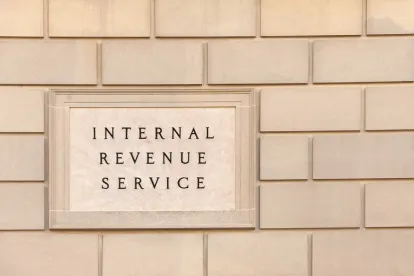On September 29, 2020, the US Department of the Treasury (Treasury) and the Internal Revenue Service (IRS) issued final regulations (TD 9922) (the 2020 Final Regulations) and related proposed regulations (REG-101657-20) (the 2020 Proposed Regulations) that address the treatment of “base differences” for purposes of allocating and apportioning foreign taxes. These regulations contain important and helpful changes to proposed regulations that were issued in 2019 (REG-105495-19) (the 2019 Proposed Regulations). In particular, these regulations limit the situations in which taxpayers are prevented from claiming foreign tax credits attributable to base difference items.
IN DEPTH
The 2019 Proposed Regulations
The 2019 Proposed Regulations provided a detailed framework for allocating and apportioning foreign taxes that was generally consistent with existing law: Taxes are allocated and apportioned on the basis of the income as computed under foreign law on which the tax is imposed. In general, under the 2019 Proposed Regulations, foreign gross income is assigned to the grouping to which the corresponding US item is assigned. If an item of foreign gross income arises from the same transaction as an item of gross income under US tax law, the foreign gross income item is assigned to the same statutory or residual grouping as the related US item.
If foreign tax is imposed on an amount that does not constitute income under US tax principles, the tax is attributable to a base difference*. The 2019 Proposed Regulations provided an exclusive list of seven items of foreign gross income that are attributable to a base difference. This list consisted of: (1) section 101 death benefits; (2) section 102 gifts and inheritances; (3) section 118 contributions to capital; (4) section 1032 receipts of money or other property in exchange for stock (including in a section 351(a) exchange); (5) section 721 receipts of money or other property in exchange for a partnership interest; (6) section 301(c)(2) distributions of property by a corporation as a return of basis; and (7) section 733 distributions to a partner.
Under the 2019 Proposed Regulations, if an item of foreign gross income is attributable to a base difference, that foreign gross income was assigned to the residual grouping, and, as such, taxes associated with the foreign gross income paid by a controlled foreign corporation (CFC) would not have been creditable. As a result, foreign taxes on common transactions such as a partnership distribution to a CFC partner would not have been creditable. Foreign taxes that are paid by a domestic corporation and attributable to a base difference were assigned to the category described in section 904(d)(2)(H)(i). This section currently cross-references foreign branch income, though this cross-reference may reflect an inadvertent drafting error (with the intended cross-reference being general category income).
*Note: Disregarded payments do not give rise to a base difference (even though they do not constitute income under US tax principles) and are instead subject to a highly complex set of rules in the 2020 Proposed Regulations that are beyond the scope of this On the Subject. These rules will be covered in a future On the Subject entry.
Modifications to the Base Difference Rules in the 2020 Final Regulations and 2020 Proposed Regulation
The 2020 Final Regulations generally retain the approach of the 2019 Proposed Regulations in allocating and apportioning foreign taxes, including the incorporation of an exclusive list of base differences. Thus, if a foreign tax is attributable to one of these base differences, it is generally assigned to a residual grouping (and, if paid by a CFC, is not creditable). However, in response to comments, Treasury and the IRS removed section 301(c)(2) distributions and section 733 distributions from the base difference list. The other five base difference items from the 2019 Proposed Regulations remain in the 2020 Final Regulations.
In the preamble to the 2020 Final Regulations, Treasury and the IRS explained that, in most cases, a foreign tax imposed on distributions described in sections 301(c)(2) and 733 is likely to represent tax on earnings and profits of the distributing entity that are accounted for at different times under US and foreign tax law (such as earnings of a hybrid partnership, earnings that are accelerated and subsequently eliminated for US tax purposes by reason of a section 338 election, or earnings and profits of lower-tier entities) rather than amounts that are permanently excluded from the US tax base.
As foreign taxes on section 301(c)(2) distributions are now treated as attributable to timing differences related to the distributing corporation’s earnings, under new Treas. Reg. § 1.861-20(d)(3)(i)(B)(2), such taxes are attributable to “hypothetical earnings” of the distributing corporation, measured based on the groupings to which the tax book value of the distributing corporation’s stock is assigned under the asset method in Treas. Reg. § 1.861-9. If, for example, CFC stock is categorized as a section 951A category asset in the hands of a US shareholder, foreign taxes paid on a section 301(c)(2) distribution received by the US shareholder would be assigned to the US shareholder’s section 951A category. If CFC stock is characterized as an asset in multiple groupings, including the section 951A category, the exempt income and asset rule under Treas. Reg. § 1.861-8(d)(2)(ii)(C) with respect to the section 250 deduction likely will apply to cause foreign taxes to be assigned to other non-section 951A categories. To the extent that a portion of the CFC stock is assigned to a section 245A subgroup under section 904(b)(4) and Treas. Reg. § 1.904(b)-3(c), a portion of the foreign taxes paid on return of capital amounts with respect to the CFC would appear to be assigned to the section 245A subgroup. The 2020 Proposed Regulations provide that in that case, neither a foreign tax credit nor a deduction would be allowed for such foreign taxes.
The 2020 Proposed Regulations contain similar “hypothetical earnings” rules for the treatment of distributions from partnerships. The rule in Prop. Reg. § 1.861-20(d)(3)(ii)(B) uses the asset apportionment percentages of the tax book value of a partner’s distributive share of the partnership’s assets (or, in the case of a limited partner with less than a 10% interest, the tax book value of the partnership interest) as a surrogate for the partner’s distributive share of earnings of the partnership that are not recognized in the year in which the distribution is made for US tax purposes.
The 2020 Proposed Regulations also contain rules that are intended to align the treatment of foreign taxes attributable to the return of capital distributions described above with foreign taxes attributable to amounts that essentially represent a return of capital on a disposition of stock or a partnership interest. For example, if a taxpayer sells stock and recognizes a greater amount of gain for foreign tax purposes than for US tax purposes (e.g., due to differences in determining stock basis), foreign taxes attributable to the excess of the foreign gain over US gain are allocated and apportioned based on the groupings to which the tax book value of the corporation’s stock is assigned under the asset method.
Implications for Taxpayers
The removal of return of capital distributions from the exclusive list of base differences is a welcome development for taxpayers, as foreign taxes that otherwise would have been assigned to a residual grouping (and therefore “lost,” if paid by a CFC) are more likely to be creditable under the 2020 Final Regulations.
To apply the asset method to assign foreign taxes attributable to return of capital amounts, taxpayers will generally use data for interest expense apportionment to compute the tax book value of stock or partnership interests (or, in the case of partners that own 10% or more of a partnership, data on the underlying assets of the partnership) and apply the relevant section 861 expense allocation and apportionment rules. Much of this information might be readily available even if the CFC applies the modified gross income method for purposes of characterization, and additional administrative work could be worthwhile to avoid “losing” taxes on a base difference.
Assigning foreign taxes based on the tax book value of CFC stock will likely result in a greater portion of foreign taxes (either paid directly or deemed paid) assigned to the section 951A category (rather than being assigned to a residual category under the approach of the 2019 Proposed Regulations). If not fully creditable in the current year, such taxes are “lost” and cannot be carried forward or back to other taxable years. A portion of the foreign taxes paid on return of capital amounts with respect to the CFC may be assigned to the section 245A subgroup if a portion of the CFC stock is assigned to a section 245A subgroup. In that case, the 2020 Proposed Regulations provide that neither a foreign tax credit nor a deduction would be allowed for such foreign taxes.
Applicability Date
The 2020 Final Regulations addressing base differences are effective for taxable years that begin after December 31, 2019. The 2020 Proposed Regulations addressing base differences are proposed to apply for taxable years that begin after December 31, 2019, and end on or after the date on which the 2020 Proposed Regulations are filed in the Federal Register.





 />i
/>i

